Managing COPD During the Coronavirus Pandemic
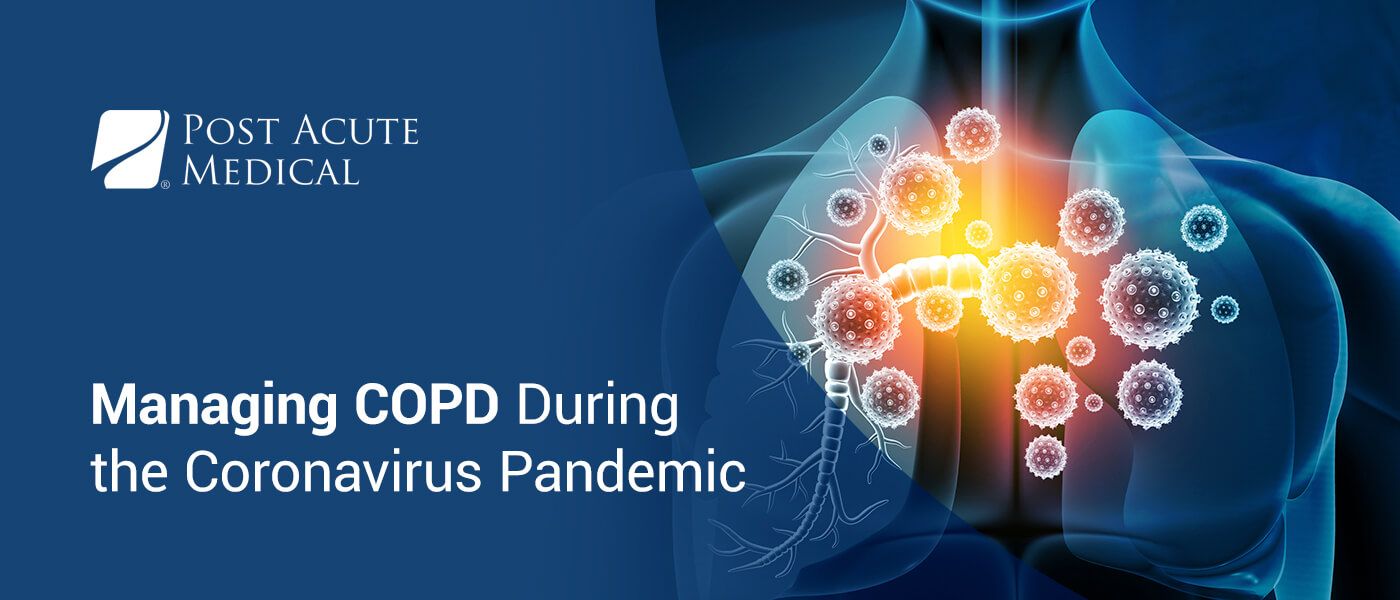
Chronic obstructive pulmonary disease (COPD) is a term that describes a group of illnesses that block airflow and cause breathing-related problems. Managing COPD during the COVID-19 pandemic can help you stay healthy and reduce your risk of exposure to viral infections. It is essential to follow all physician and state guidance and recommendations to maintain your health. Chronic medical conditions and COVID-19 can be particularly challenging for patients who struggle to breathe comfortably.
Understanding the relationship between COPD and coronavirus can ensure you maintain proper lung health and lower your risk of becoming sick. COPD can obstruct the airways, trigger shortness of breath and cause an increase in mucus production. These symptoms can make it difficult for people with COPD to breathe regularly or inhale deeply.
Explore Cardiopulmonary Rehabilitation Offered by PAM Health
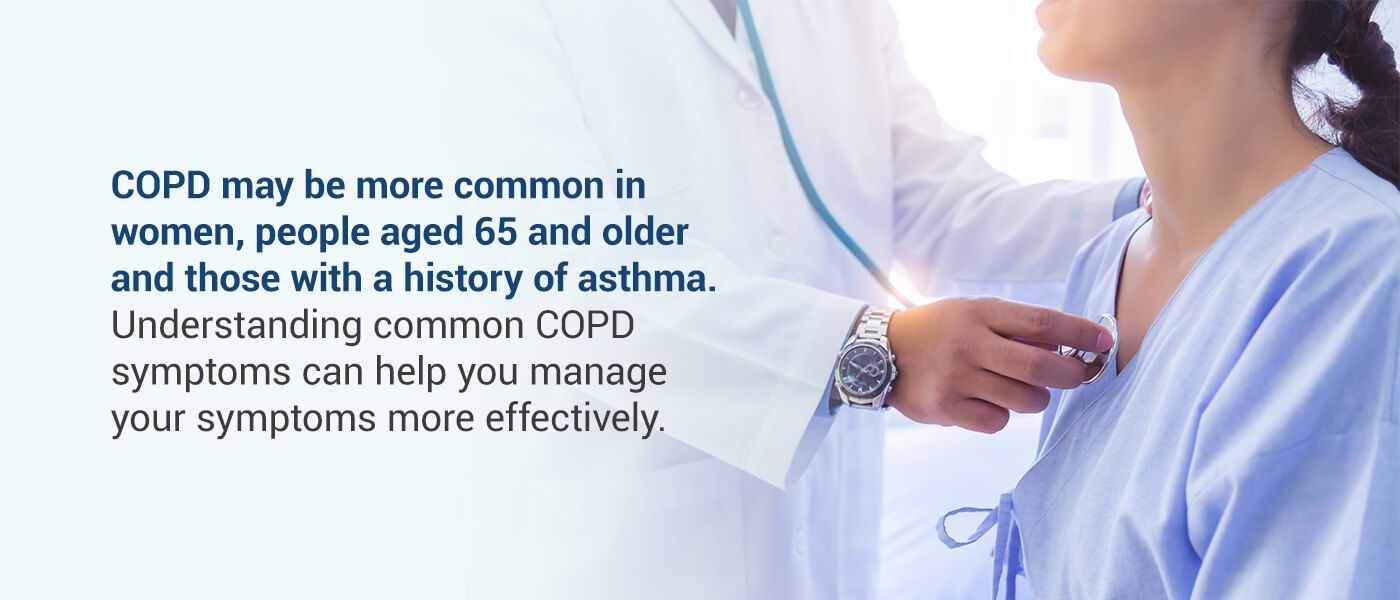
COPD and Its Effects on Breathing
Common examples of COPD include emphysema and chronic bronchitis, ranging from mild to severe. The Centers for Disease Control estimate that 16 million Americans have COPD, a condition that causes labored breathing and shortness of breath. Physicians believe that millions more Americans experience symptoms of COPD, but have not received an official diagnosis.
One of the central factors leading to COPD in the United States is tobacco smoke and use. Additionally, exposure to air pollutants in the home and workplace, genetic factors and respiratory infections may also increase the risk of COPD. COPD may be more common in women, people aged 65 and older and those with a history of asthma. Understanding common COPD symptoms can help you manage your symptoms more effectively.
Frequent Coughing or Wheezing
A chronic cough or continual wheezing are two of the most common symptoms that someone with COPD may experience. Coughing or wheezing may occur each day even if there are no other symptoms of an illness present. Coughing is how your body can remove mucus, sputum and other secretions from the airways and lungs.
For many patients, a COPD cough may be worse in the morning, when physically active or if you smoke. In addition to coughing, wheezing is a common symptom of COPD that occurs when you exhale air through obstructed airways from the lungs. A chronic wheeze often stems from excess mucus blocking the airways and muscular tightening of the airways.
Excess Phlegm, Mucus or Sputum Production
When you have COPD, your lungs may produce thicker mucus than usual, making it more difficult to breathe easily. Thicker mucus, phlegm or sputum may obstruct the lungs and airways. Excess mucus production is typically the cause of chronic cough in people with COPD, as their bodies are trying to create a productive cough to remove the presence of mucus from the airways.
Mucus can be various colors, including clear, white, yellow or even green. Patients with COPD may experience increased mucus production and secretion because of oversized mucus glands in their airways. Those with COPD are often at a higher risk for severe upper respiratory tract infections that require a longer recovery period.
Shortness of Breath
COPD can cause some patients to feel a tightness in their chests that can make taking a deep breath difficult. Many people with COPD experience airway and lung obstructions, which slow the breath or make it difficult to take in a large amount of air. For those experiencing shortness of breath, it is crucial to follow up with your doctor for advice.
Those with COPD may experience difficulty catching their breath or shortness of breath while climbing stairs, cleaning around the house or even bathing. In more severe COPD cases, shortness of breath or difficulty breathing can even occur when someone is at rest.
Trouble Taking a Deep Breath
For people with COPD, taking a deep inhale may be challenging because of mucus or other obstructions in the airways and lungs. Many physicians recommend various breathing exercises to help strengthen the lungs and improve breathing in patients with COPD.
Managing stable COPD may increase your ability to breathe deeply by following physician recommendations and treatment regimens. Physicians strongly recommend quitting smoking to help your lungs heal to reduce the severity of COPD symptoms. For people with COPD, focusing on air quality and avoiding air that contains possible irritants — including cleaning supplies, car exhaust and chemical fumes — is vital.
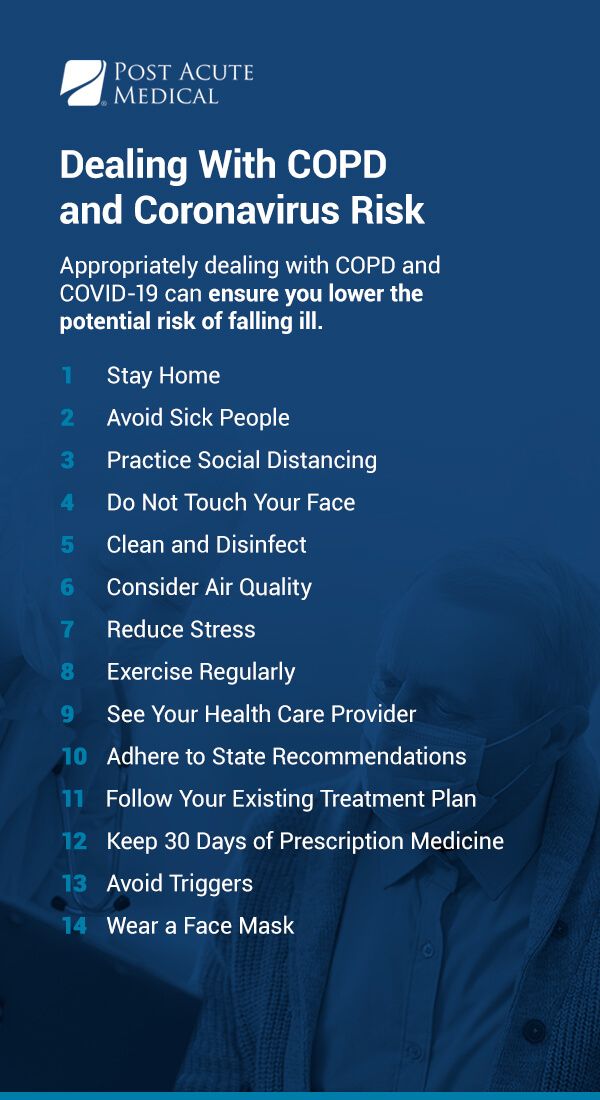
Dealing With COPD and Coronavirus Risk
Appropriately dealing with COPD and COVID-19 can ensure you lower the potential risk of falling ill. Adults with chronic medical conditions may be more likely to experience more severe symptoms if they develop COVID-19. Our 14 tips about COPD and COVID-19 risk can help you stay healthy and safe.
1. Stay Home
When possible, it is best to stay home to lower your risk of exposing yourself to COVID-19 and other illnesses. While avoiding others is the safest thing to do, it is understandable that you will sometimes need to go out for vital errands, such as grocery shopping or visiting a doctor. When you leave the house, it is essential to wear a properly fitting face mask and sanitize your hands wherever possible.
2. Avoid Sick People
If you know that a friend or family member may be sick or feeling unwell, it is best to reschedule a visit and avoid coming into contact with potential germs. While this may seem simple, it can be challenging to stay away from sick people if you need to go to a doctor's office or medical setting. Wearing a clean and snugly fitting face mask is one of the most crucial steps to safely visit your doctor during the COVID-19 pandemic.
3. Practice Social Distancing
Social distancing is the act of physically staying away from other people. To correctly practice social distancing, you should stand at least six feet away from the nearest person. Research has shown that those who practice proper social distancing have a fraction of COVID-19 risk compared to those who do not.
4. Do Not Touch Your Face
It is essential to avoid touching your face, especially when out in public. COVID-19 is transmittable through mucous membranes in the mouth, nose and eyes. To lower your risk of COVID-19, you should avoid touching your face and ensure that you wash your hands regularly or use hand sanitizer.
5. Clean and Disinfect
Regularly disinfecting surfaces can also help reduce your potential exposure to COVID-19. After a grocery trip or if a guest has left your home, it is generally best to clean any high-touch surfaces, such as doorknobs, countertops or sinks.
6. Consider Air Quality
Poor air quality can worsen COPD symptoms, such as difficulty breathing or a chronic cough. One tip for considering air quality is to check pollution reports before going out. If reports show a high potential for pollutants, you may want to consider staying inside and rescheduling your plans for a day with better air quality.
7. Reduce Stress
COPD may cause many people to experience chronic stress when they cannot breathe easily or deeply. Learning to manage stress related to COPD can help you calm down when experiencing shortness of breath or continual coughing. There is a close link between COPD and stress, and shortness of breath may make existing anxiety worse.
8. Exercise Regularly
Regular exercise is an essential part of leading a healthy lifestyle, even if you have COPD or another chronic health condition. A physician can recommend exercises that may be right for you and that will not overwork your lungs. While it is always best to check with your physician before starting a new workout, popular exercises for people with COPD can strengthen muscles and make daily activities easier.
9. See Your Health Care Provider
Regularly visiting your health care provider is a critical step to maintaining your health and reducing the severity of COPD symptoms. Your physician can also provide essential information and advice on COPD and COVID-19 and how to stay safe. If symptoms worsen, your physician can also recommend an appropriate treatment.
10. Adhere to State Recommendations
During COVID-19, follow state recommendations on how to stay safe when going out. Many states have implemented specific mandates and protocols to follow, so it is best to get the latest and most up-to-date information from your local government's website on the tips to follow to stay healthy.
11. Follow Your Existing Treatment Plan
If your current strategies for dealing with COPD are working well for you, keep them up. While COVID-19 has caused many things to change, it is vital to continue following any advice, recommendations or treatment plans your doctor has suggested to manage symptoms effectively.
12. Keep 30 Days of Prescription Medicine
It is generally a best practice to keep a 30-day supply of any prescription medications you may rely on. Having a monthly supply of medication can reduce your need to go out frequently to pick prescriptions up. Additionally, prescription delivery services can bring your medication to your door, allowing you to get what you need without leaving the house.
13. Avoid Triggers
You will always want to steer clear of potential triggers that may aggravate your COPD symptoms or cause discomfort. Poor air quality, pollutants, irritants and allergens can all worsen COPD symptoms and cause coughing, wheezing or difficulty breathing.
14. Wear a Face Mask
Wearing a face mask is one of the most crucial steps to protecting yourself against COVID-19. A mask should adequately cover your face and nose, which can prevent the spread of germs. Masks can reduce the potential of transmitting or contracting COVID-19. Research has shown that wearing a face covering can decrease your risk of infection by 65%.
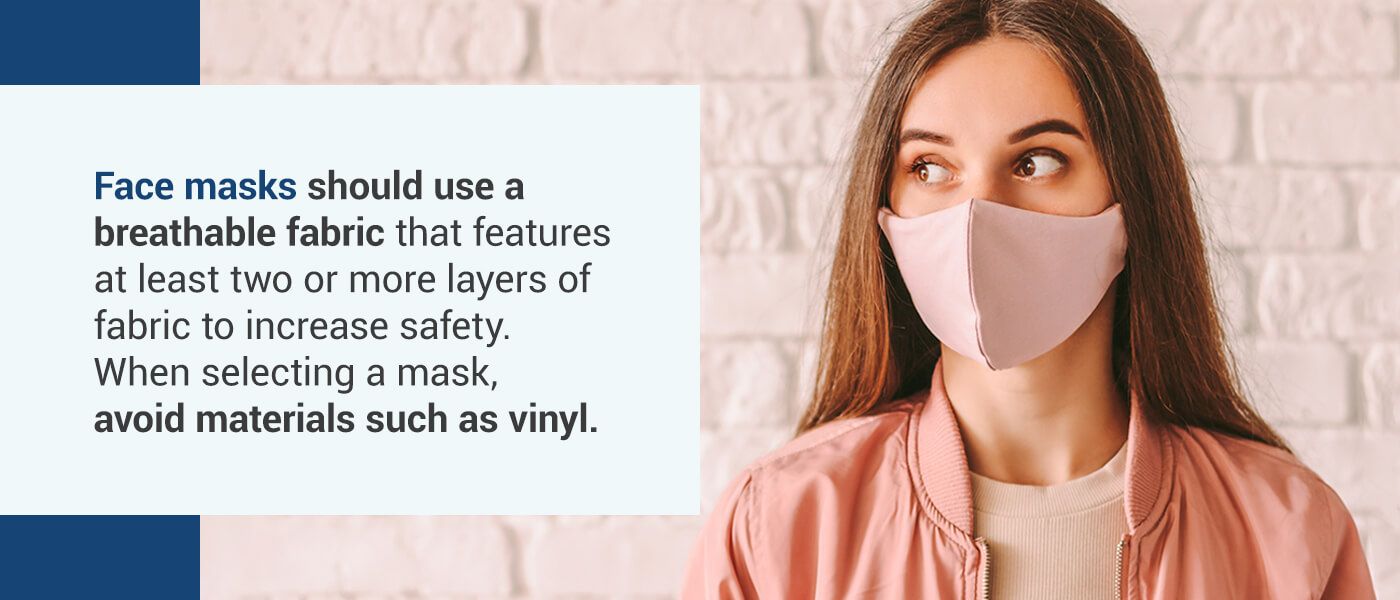
Mask-Wearing Tips for COPD and COVID-19
A mask is your first line of defense against COVID-19. However, those with COPD may have a particularly challenging time wearing a face mask. Many people with COPD may experience shortness of breath or difficulty taking a deep breath in general, which a face mask can worsen. Following common tips for wearing a mask may help increase comfort and prevent the potential transmission of germs.
- Fit: A face mask should fit comfortably yet snugly along the face. A properly fitting face mask should lay flat against your cheeks without any loose areas or openings. A nose strip is also a crucial feature of many face masks that you can adjust more tightly to reduce your overall exposure to germs. A face mask should always cover the lower two-thirds of your face, from the bridge of your nose to just below your chin.
- Fabric: Face masks should use a breathable fabric that features at least two or more layers of fabric to increase safety. When selecting a mask, avoid materials such as vinyl, which may make breathing even more difficult.
- Washing: It is essential to wash reusable face masks regularly and to never wear a dirty mask. Many people choose to buy several masks so they can always pick up a clean one before going out. Most reusable face masks are machine- or hand-washable.
What If You Can't Wear a Face Mask?
While wearing a mask is the best thing you can do to decrease the risk of contracting COVID-19, some people with COPD may not be able to safely or comfortably do so. If a mask makes breathing too challenging, you will want to consider alternative ways to run your errands. Wearing a face mask in public places is necessary and mandated by many states. If you cannot wear a face mask, you may want to research virtual services or delivery options so you do not have to leave home to get your shopping done.
- Delivery services: If you cannot comfortably travel or wear a mask, you can take advantage of delivery services. During COVID-19, many services have emerged to deliver essential items to your home, including groceries and even prescription medication. Finding a reliable delivery service can help you get the supplies you need while reducing the number of trips you have to make in a month.
- Friends and family: If you cannot find possible delivery services or do not think you can afford them, you can reach out to family, friends and even neighbors for help. If you know someone is going to a store, you can ask if they wouldn't mind picking up a necessary item for you. Also, many volunteers and organizations aim to help the elderly or those with a chronic medical condition safely receive the supplies they need without leaving their homes.
- Practice at home: Some people with COPD may find it helpful to practice wearing a mask at home. Training can help you acclimate to the sensation of wearing a face mask in a comfortable environment. Another benefit of practicing at home is that you can safely remove your face mask whenever you need to if you experience breathing difficulty.
- Avoid humidity: High heat and humidity levels may worsen symptoms for those with COPD. You should avoid going out on days when high temperatures and humidity levels are in the forecast. Another way to avoid heat is to plan your trips earlier in the morning or later in the afternoon to avoid the warmest parts of the day. An indoor humidity level between 30 and 50% is ideal.
- Consider outdoor alternatives: If you cannot wear a mask, you may want to consider outdoor options that may not require one. It is vital to check with your state's local mandates to confirm if you must wear a mask outside. If your local area does not require a mask for outdoor events, you may want to consider outdoor farmers' markets or other safe options to finish your shopping.
- Social distancing: Managing health conditions while social distancing can help maintain your safety. If you go to an outdoor event that doesn't require you to wear a face covering, you must prioritize proper physical distancing and ensure that you give yourself at least six feet of space between yourself and the nearest person.
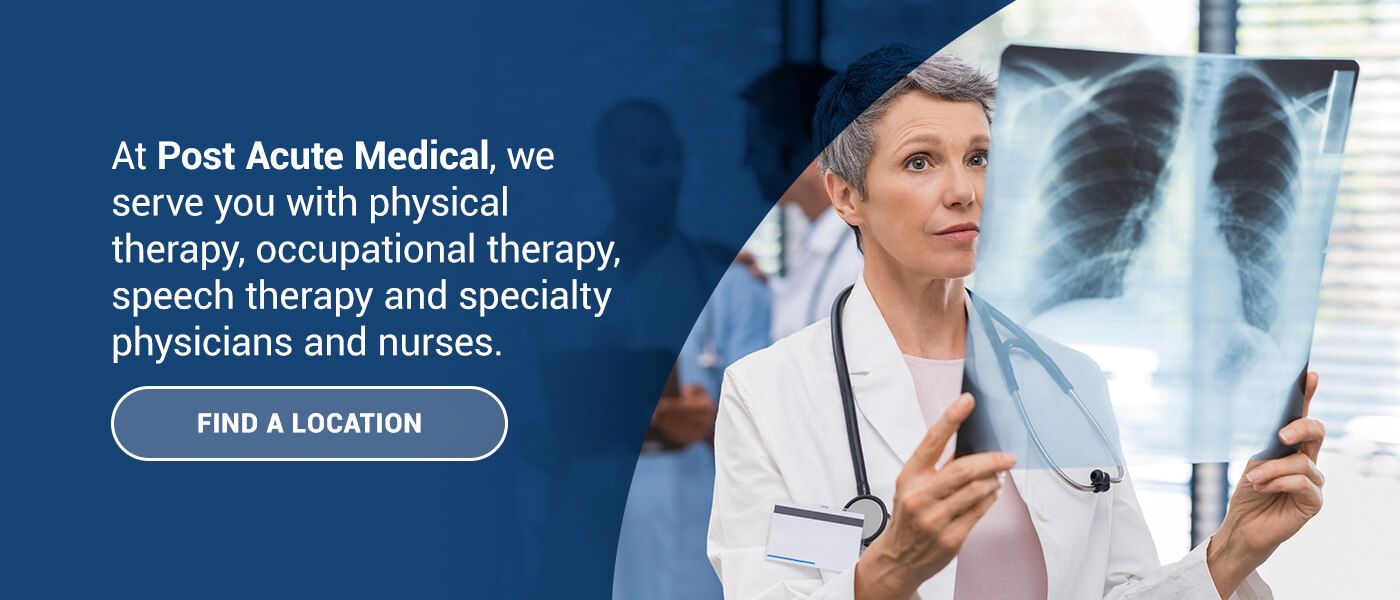
Premium Patient Care at Post Acute Medical
Our mission at Post Acute Medical is to provide the highest-quality care to every patient. We hope to help patients achieve an optimal quality of life by offering fully customized, quality care. At Post Acute Medical, we serve you with physical therapy, occupational therapy, speech therapy and specialty physicians and nurses. Our goal is to help patients reach their highest possible functional status and maintain a healthy lifestyle.
To learn more about our patient care services, find a Post Acute Medical location near you.